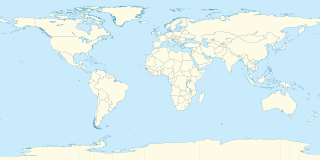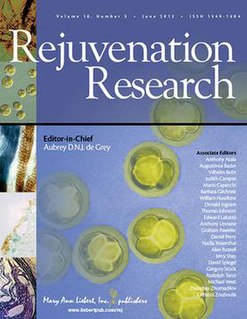 W
WThe Baopuzi, written by the Jin dynasty scholar Ge Hong 葛洪 in 283-343, is divided into esoteric Neipian 內篇 "Inner Chapters" and equally exoteric Waipian 外篇 "Outer Chapters". The Taoist Inner Chapters discuss topics such as techniques to achieve "hsien" 仙, Chinese alchemy, elixirs, and demonology. The Confucian Outer Chapters discuss Chinese literature, Legalism, politics, and society.
 W
WBigu is a Daoist fasting technique associated with achieving xian "transcendence; immortality". Grain avoidance is related to multifaceted Chinese cultural beliefs. For instance, bigu fasting was the common medical cure for expelling the sanshi 三尸 "Three Corpses", the malevolent, grain-eating spirits that live in the human body, report their host's sins to heaven every 60 days, and carry out punishments of sickness and early death. Avoiding "grains" has been diversely interpreted to mean not eating particular foodstuffs, or not eating any food. In the historical context of traditional Chinese culture within which the concept of bigu developed, there was great symbolic importance connected with the five grains and their importance in sustaining human life, exemplified in various myths and legends from ancient China and throughout subsequent history. The concept of bigu developed in reaction to this tradition, and within the context of Daoist philosophy.
 W
WBlue Zones are regions of the world where a higher than usual number of people live much longer than average. The term first appeared in his November 2005 National Geographic magazine cover story, "The Secrets of a Long Life". Five "Blue Zones" have been posited: Okinawa (Japan); Sardinia (Italy); Nicoya ; Icaria (Greece); and among the Seventh-day Adventists in Loma Linda, California, based on evidence showing why these populations live healthier and longer lives than others.
 W
WIn Chinese alchemy, elixir poisoning refers to the toxic effects from elixirs of immortality that contained metals and minerals such as mercury and arsenic. The official Twenty-Four Histories record numerous Chinese emperors, nobles, and officials who died from taking elixirs in order to prolong their lifespans. The first emperor to die from elixir poisoning was likely Qin Shi Huang and the last was Yongzheng. Despite common knowledge that immortality potions could be deadly, fangshi and Daoist alchemists continued the elixir-making practice for two millennia.
 W
WCryonics is the low-temperature freezing and storage of a human corpse or severed head, with the speculative hope that resurrection may be possible in the future. Cryonics is regarded with skepticism within the mainstream scientific community. It is generally viewed as a pseudoscience, and its practice has been characterized as quackery.
 W
WThe elixir of life, also known as elixir of immortality and sometimes equated with the name philosopher's stone, is a potion that supposedly grants the drinker eternal life and/or eternal youth. This elixir was also said to cure all diseases. Alchemists in various ages and cultures sought the means of formulating the elixir. The modern concept probably originated in ancient India or China - independently, in Mesopotamia and Japan - with these Asian cultures preceding that concept in Europe by millennia.
 W
WEnding Aging: The Rejuvenation Breakthroughs that Could Reverse Human Aging in Our Lifetime is a 2007 book written by Aubrey de Grey, a biomedical gerontologist, with his research assistant Michael Rae. Ending Aging describes de Grey's proposal for eliminating aging as a cause of debilitation and death in humans, and restoring the body to an indefinitely youthful state, a project plan that he calls the "Strategies for Engineered Negligible Senescence", or "SENS". De Grey argues that defeating aging is feasible, possibly within a few decades, and he outlines steps that can be taken to hasten the development of regenerative medicine treatments that will save lives.
 W
WEternal youth is the concept of human physical immortality free of ageing. The youth referred to is usually meant to be in contrast to the depredations of aging, rather than a specific age of the human lifespan. Eternal youth is common in mythology, and is a popular theme in fiction.
 W
WFantastic Voyage: Live Long Enough to Live Forever is a book authored by Ray Kurzweil and Terry Grossman published in 2004. The basic premise of the book is that if middle aged people can live long enough, until approximately 120 years, they will be able to live forever—as humanity overcomes all diseases and old age itself. This might also be considered a break-even scenario where developments made during a year increase life expectancy by more than one year. Biogerontologist Aubrey de Grey called this the "Longevity escape velocity" in a 2005 TED talk.
 W
WGerontology is the study of the social, cultural, psychological, cognitive, and biological aspects of aging. The word was coined by Ilya Ilyich Mechnikov in 1903, from the Greek γέρων, geron, "old man" and -λογία, -logia, "study of". The field is distinguished from geriatrics, which is the branch of medicine that specializes in the treatment of existing disease in older adults. Gerontologists include researchers and practitioners in the fields of biology, nursing, medicine, criminology, dentistry, social work, physical and occupational therapy, psychology, psychiatry, sociology, economics, political science, architecture, geography, pharmacy, public health, housing, and anthropology.
 W
WThe Hayflick limit, or Hayflick phenomenon, is the number of times a normal human cell population will divide before cell division stops.
 W
WiFood contains nutrients in which some atoms are replaced with their heavier non-radioactive isotopes, such as deuterium 2H or heavy carbon 13C. Biomolecules that incorporate heavier isotopes give rise to more stable molecular structures with increased resistance to damages associated with ageing or diseases. In a scientific study Nematodes given ifood lived 15% longer than controls.
 W
WImmortality is eternal life, being exempt from death; unending existence. Some modern species may possess biological immortality.
 W
WIn the life extension movement, longevity escape velocity (LEV) or actuarial escape velocity is a hypothetical situation in which life expectancy is extended longer than the time that is passing. For example, in a given year in which longevity escape velocity would be maintained, technological advances would increase life expectancy more than the year that just went by.
 W
WThe Methuselah-like proteins are a family of G protein-coupled receptors found in insects that play a role in aging and reproduction. Antagonizing these receptors can extend the life span of the animal and make it more resistant to free radicals and starvation, but also reduce reproduction and increase cold sensitivity. The age dependent decline in olfaction and motor function is unaffected.
 W
WNicotinamide mononucleotide is a nucleotide derived from ribose and nicotinamide. Like nicotinamide riboside, NMN is a derivative of niacin, and humans have enzymes that can use NMN to generate nicotinamide adenine dinucleotide (NADH). In mice, NMN enters cells via the small intestines within 10 minutes converting to NAD+ through the Slc12a8 NMN transporter.
 W
WRejuvenation Research is a bimonthly peer-reviewed scientific journal published by Mary Ann Liebert that covers research on rejuvenation and biogerontology. The journal was established in 1998 and the editor-in-chief is Aubrey de Grey. It is the official journal of the European Society of Preventive, Regenerative and Anti-Aging Medicine as well as PYRAMED: World Federation and World Institute of Preventive & Regenerative Medicine.
 W
WCloning is the process of producing individuals with identical or virtually identical DNA, either naturally or artificially. In nature, many organisms produce clones through asexual reproduction. Cloning in biotechnology refers to the process of creating clones of organisms or copies of cells or DNA fragments.
 W
WThe selection shadow is a concept involved with the evolutionary theories of aging that states that selection pressures on an individual decrease as an individual ages and passes sexual maturity, resulting in a "shadow" of time where selective fitness is not considered. Over generations, this results in maladaptive mutations that accumulate later in life due to aging being non-adaptive toward reproductive fitness. The concept was first worked out by J. B. S. Haldane and Peter Medawar in the 1940s, with Medawar creating the first graphical model.
 W
WShijie, which has numerous translations such as liberation from the corpse and release by means of a corpse, is an esoteric Daoist technique for an adept to transform into a xian, typically using some bureaucratic ruse to evade the netherworld administrative system of life and death registration. The many varieties of shijie range from deceitful cases, such as a person feigning death by substituting the corpse of their recently deceased grandfather as their own, to supernatural cases, such as using a waidan alchemical sword to temporarily create a corpse-simulacrum, which enables one to escape and assume a new identity.
 W
WShòu is the Chinese word/character for "longevity".
 W
WShunamitism is practice of an old man sleeping with, but not necessarily having sex with, a young virgin to preserve his youth. It is considered an esoteric youth-enhancing method. The rationale was that the heat and moisture of the young woman would transfer to the old man and revitalize him.
 W
WSiming refers to a Chinese deity or deified functionary of that title who makes fine adjustments to human fate, with various English translations. Siming is both an abstract deity and a celestial asterism.
 W
WIn genetics and developmental biology, somatic cell nuclear transfer (SCNT) is a laboratory strategy for creating a viable embryo from a body cell and an egg cell. The technique consists of taking an enucleated oocyte and implanting a donor nucleus from a somatic (body) cell. It is used in both therapeutic and reproductive cloning. In 1996, Dolly the sheep became famous for being the first successful case of the reproductive cloning of a mammal. In January 2018, a team of scientists in Shanghai announced the successful cloning of two female crab-eating macaques from fetal nuclei.
 W
WXian refers to a person or similar entity having a long life or being immortal. The concept of xian has different implications dependent upon the specific context: philosophical, religious, mythological, or other symbolic or cultural occurrence. The Chinese word xian is translatable into English as:(in Daoist philosophy and cosmology) spiritually immortal; transcendent; super-human; celestial being (in Daoist religion and pantheon) physically immortal; immortal person; immortalist; saint (in Chinese alchemy) alchemist; one who seeks the elixir of life; one who practices longevity techniques (or by extension) alchemical, dietary, or qigong methods for attaining immortality (in Chinese mythology) wizard; magician; shaman (in popular Chinese literature) genie; elf, fairy; nymph; 仙境 (based on the folk etymology for the character 仙, a compound of the characters for person and mountain) sage living high in the mountains; mountain-man; hermit; recluse (as a metaphorical modifier) immortal [talent]; accomplished person; celestial [beauty]; marvelous; extraordinary